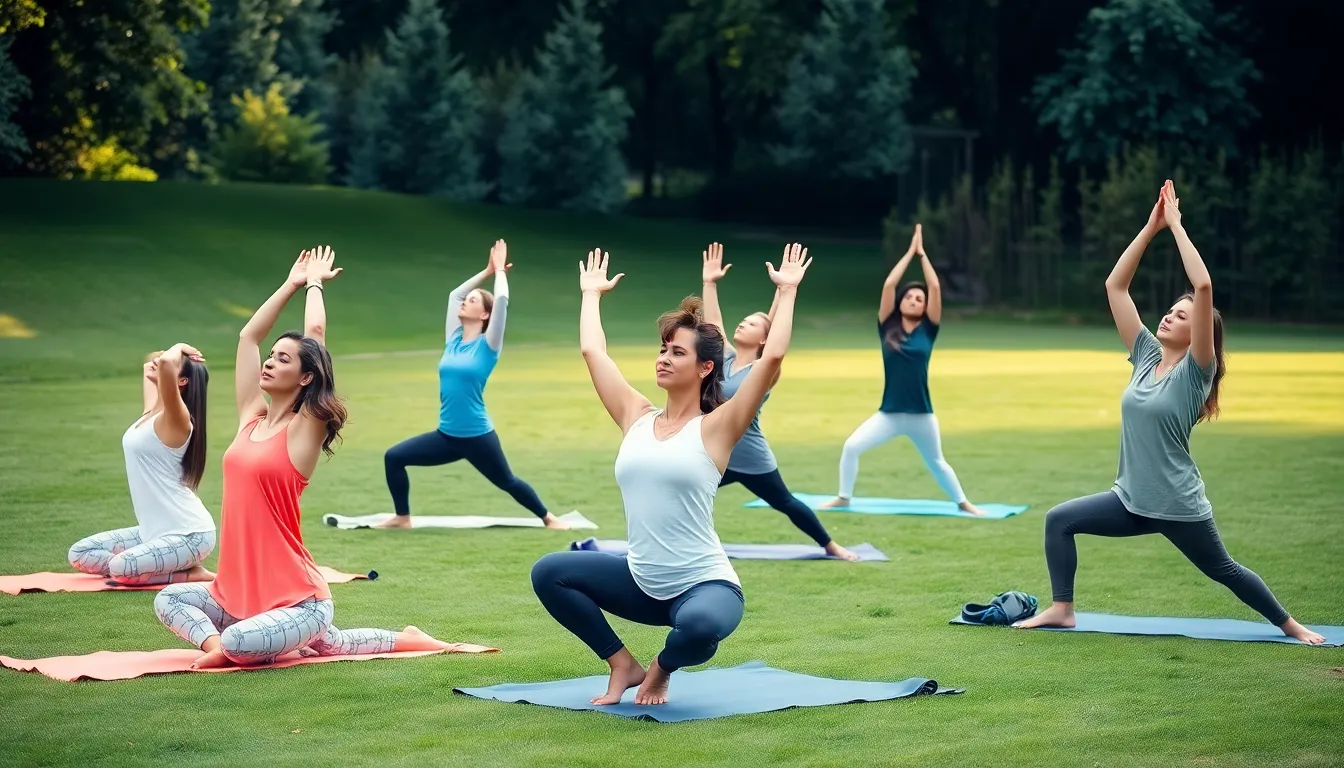Kinesiology exercise science might sound like a mouthful, but it’s the secret sauce to unlocking human potential. Imagine a world where every workout feels like a walk in the park, and every stretch comes with a side of laughter. This fascinating field combines biology, psychology, and a sprinkle of magic to help individuals move better, feel better, and maybe even dance like no one’s watching.
Table of Contents
ToggleOverview of Kinesiology Exercise Science
Kinesiology exercise science combines principles from biology and psychology to explore human movement. This field focuses on the mechanics behind physical activity, emphasizing how individuals can enhance their performance and overall health. Experts study the structures of the body, such as muscles and joints, to understand how they contribute to movement efficiency.
Research in kinesiology also examines cognitive aspects that impact exercise. Mental engagement during physical activity plays a crucial role in motivation and enjoyment. Understanding these psychological factors can lead to more effective workout strategies tailored to an individual’s preferences.
Various disciplines intersect within kinesiology, including biomechanics, exercise physiology, and motor control. Each area contributes to a comprehensive understanding of how the body functions during movement. For instance, biomechanics studies the physical forces exerted on the body, while exercise physiology explores the body’s metabolic responses to physical activity.
The implications of kinesiology exercise science extend into therapeutic settings. Practitioners can design targeted rehabilitation programs to aid recovery from injuries. These tailored interventions often incorporate exercise for strengthening and restoring movement patterns.
Kinesiology promotes lifelong fitness and well-being, encouraging individuals to incorporate enjoyable activities into their routines. From sports training to recreational pursuits, kinesiology provides a foundation for maximizing movement potential. By focusing on both physical and mental aspects of exercise, this discipline shapes a holistic approach to health.
Key Principles of Kinesiology
Kinesiology focuses on understanding human movement and its underlying mechanics. This discipline integrates various scientific principles to enhance performance and promote well-being.
Human Movement Analysis
Human movement analysis examines how individuals perform physical activities. This study involves observing biomechanics, muscle activation patterns, and joint movement. Practitioners evaluate posture and movement efficiency to identify potential issues. They employ various tools such as motion capture technology and force plates to gather precise data. Findings from this analysis improve movement patterns, enhancing overall physical performance. Critical aspects include developing personalized exercise plans tailored to individual needs, ensuring proper body alignment during activities.
Biomechanics in Exercise
Biomechanics plays a crucial role in understanding force dynamics during movement. The discipline investigates how mechanical laws affect human performance in various sports and activities. Muscle force, joint angles, and body mechanics interact to influence overall efficiency. Knowledge from biomechanics helps establish optimal movement strategies that reduce injury risk. Injuries often stem from improper mechanics, making biomechanical analysis essential for rehabilitation. Evaluating athletic performance allows coaches to refine techniques, ultimately boosting outcomes in competitive settings.
Applications of Kinesiology Exercise Science
Kinesiology exercise science offers valuable applications in various fields, particularly in sports performance and rehabilitation.
Sports Performance Enhancement
Athletes significantly benefit from kinesiology through targeted training programs. Enhanced biomechanics contribute to optimized movement efficiency, enabling better performance. Practitioners analyze athletes’ movements, identifying areas for improvement in strength and flexibility. Motion capture technology plays a pivotal role by providing detailed feedback on technique. Coaches utilize this data to refine training regimens, focusing on specific muscle activation patterns and joint mechanics. As a result, athletes experience improved speed, agility, and overall competitive advantage.
Rehabilitation and Injury Prevention
Kinesiology is crucial in rehabilitation, offering specialized programs tailored to individual recovery needs. Professionals assess injuries using biomechanical principles to create effective rehabilitation strategies. Customized exercise regimens strengthen vulnerable areas and restore range of motion. Injury prevention initiatives emphasize educating individuals about proper body mechanics during physical activities. Awareness of movement patterns reduces the likelihood of future injuries. By integrating both rehabilitation and preventive measures, kinesiology enhances overall physical health and well-being.
Research Trends in Kinesiology
Research in kinesiology is evolving rapidly, focusing on enhancing physical performance and improving health outcomes through evidence-based studies.
Current Studies and Findings
Current studies explore various aspects of human movement, biomechanics, and exercise interventions. Research demonstrates that tailored exercise programs significantly improve recovery times for individuals with injuries. Findings indicate that mental engagement during exercise boosts motivation, leading to better adherence to workout routines. Additionally, studies highlight the importance of understanding the biomechanics of specific sports, revealing that even minor adjustments can enhance performance and reduce injury risk. Data shows that incorporating technology, like wearables and motion capture, significantly improves the analysis of biomechanics, providing real-time feedback for athletes and practitioners.
Future Directions in the Field
Future research in kinesiology emphasizes integrating technology with traditional practices to enhance exercise science. Investigating the effects of virtual reality on rehabilitation could revolutionize therapeutic approaches. Studies might also focus on personalized exercise regimens that consider genetic factors, optimizing performance based on individual responses. Understanding the impact of mental health on physical performance is likely to receive increased attention, potentially shaping holistic training models. Collaboration between disciplines such as psychology and kinesiology may lead to innovative strategies that promote both physical and mental well-being in exercise contexts.
Kinesiology exercise science stands at the forefront of enhancing human movement and well-being. By merging biological and psychological insights, it paves the way for innovative approaches to fitness and rehabilitation. This field’s focus on biomechanics and mental engagement not only optimizes performance but also fosters a deeper connection to physical activity.
As research continues to evolve, the integration of technology and personalized strategies will likely redefine how individuals approach exercise. With its emphasis on enjoyable movement and holistic health, kinesiology encourages everyone to embrace a lifestyle rich in physical activity. The future of exercise science holds promise for improving lives through targeted interventions and a deeper understanding of the body and mind.




